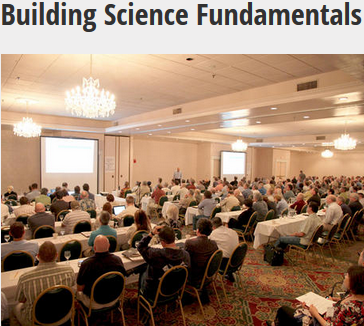
Happy Fourth of July week!!!
Last week I attended Building Science Fundamentals in Dallas, TX; coordinated by Building Science Corporation with host, and presenter, Joe Lstiburek, also known as Dr. Joe.
Last week I shared some of the ideas from Day 1, and here are some of the ideas from Day 2:
- Radiant night sky cooling
- By lowering air change 200 cfm, you can reduce HVAC sizing by approximately 1 ton
- Typical ventilation rates (1/300, 1/150) were intended for poorly insulated attics in cold climates
- Joe Lstiburek is the father/grandfather of unvented attics
- Good/Better/Best attic and ceiling assemblies
- Ice damns
- Why basements exist
- Truss uplift led to floating ceilings
- Work in Phoenix led to closed attics in Florida and open cell foam dominating complicated roof designs in hot humid climates
- Vapor pressure is higher in higher locations and lower in lower locations
- Diffusion venting can be used to create closed assemblies with air-permeable insulation
- Air quality based on 4 P’s: People, Pollutants, Path and Pressure
- Wet spots may not be wet when you are looking, you have to find the spot that was wet or could become wet
- Sensitivity of tools: Smoke pencil – 1/100th of a Pascal, Lick your hand – 1 Pascal, Dry hand – 5 Pascals
- 3 Types of Controlled ventilation: Exhaust ventilation, Supply ventilation, Balanced ventilation
- We test plumbing and other systems by pressurizing, why is blower door testing negative?
Over the next few weeks we will dive deeper into some of the notes from this seminar. Which of these ideas do you want to hear more about? Comment below with your thoughts.
Stay tuned next week as we continue to discuss the interesting world of spray foam insulation.
Subscribe here to keep in touch with Spray Foam Advisor and get your FREE copy of 25 SPF Frequently Asked Questions and a PRIVATE link to Robert Naini’s SPFA Breakout Session, “3 Ways to Close More Sales with Building Science.”


